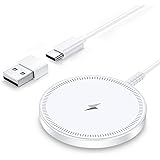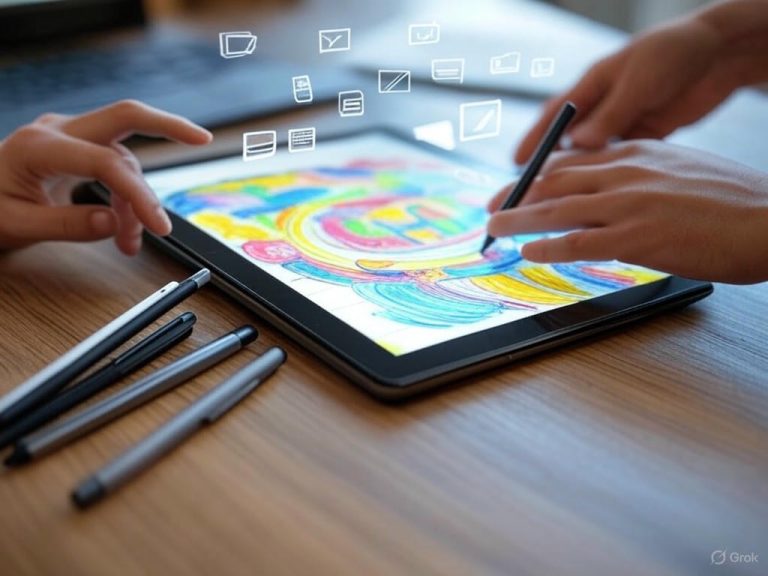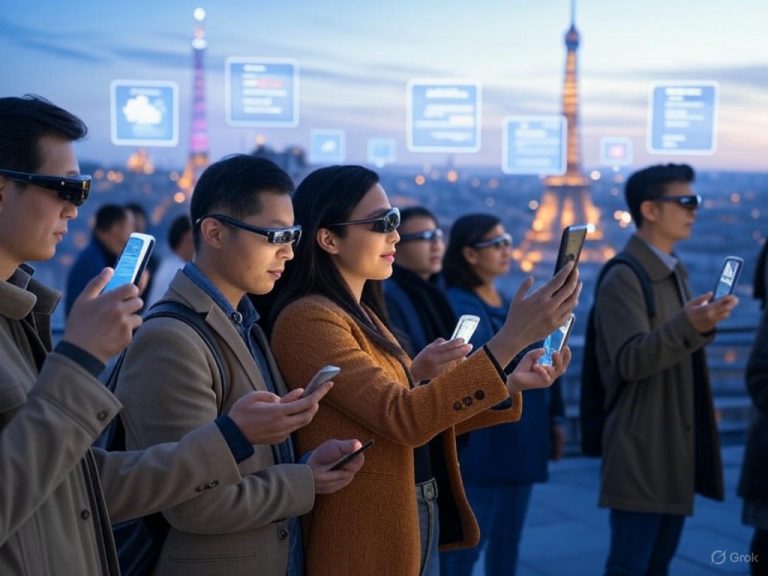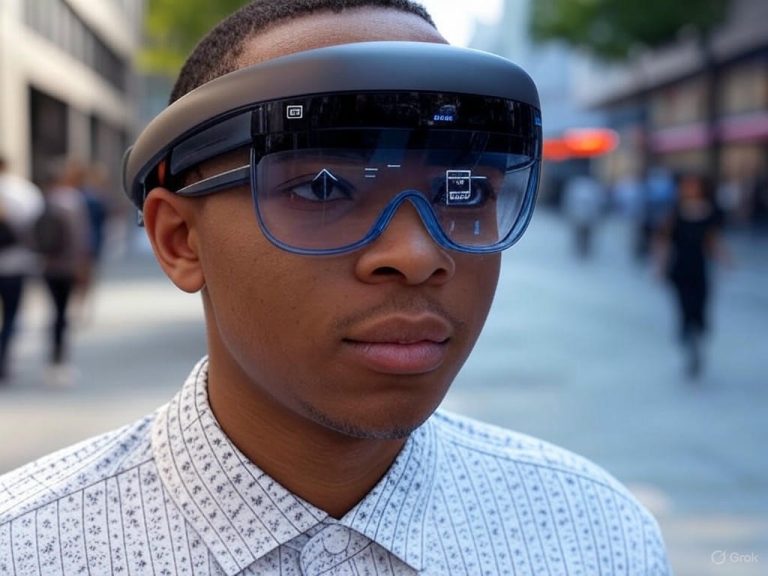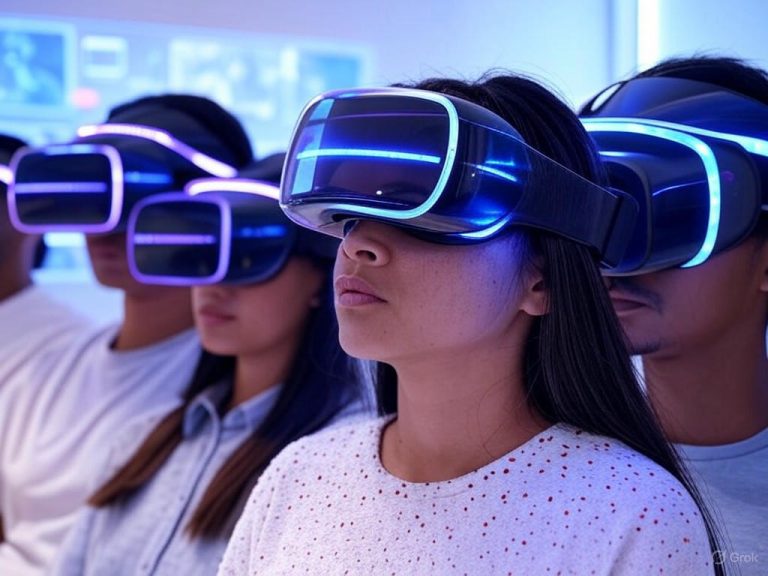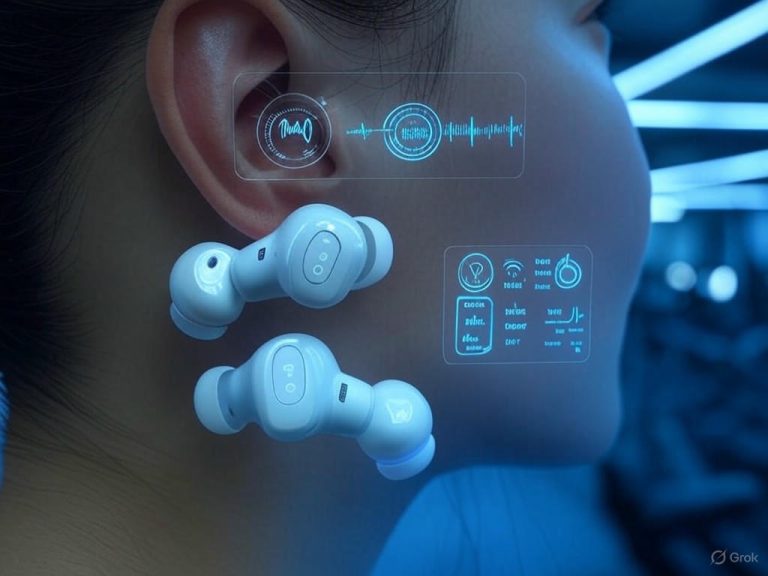
- Introduction & Camera Hardware Overview
- Camera Hardware Overview: Sensors, Lenses, and Processing
- Translating Specs to Real-World Scenarios
- How the Hardware Translates for Different Users
- Real-World Photo and Video Performance: Comparative Analysis
- Real-World Photo and Video Performance: Comparative Analysis
- Daylight and Color Science: Near Parity, Subtle Divergence
- Low-Light and Night Mode: Pixel’s Computational Edge, Apple’s Rapid Progress
- Portraits and Bokeh: Style Versus Realism
- Ultrawide: Apple’s Major Leap, Google’s Reliable Consistency
- Telephoto & Zoom: Google’s Super Res Advantage
- Video Recording: Apple’s Continued Dominance, Pixel’s Steady Progress
- AI and Editing Tools: Magic Eraser’s Refinement vs. Clean Up’s Caution
- Consistency, Usability, and Persistent Quirks
- Verdict: Which Wins in the Real World?
- Software Features, Ecosystem Integration, and Practical Value
Pixel 9 Pro vs iPhone 16 Pro: Real-World Camera Face-Off 2024

Introduction & Camera Hardware Overview
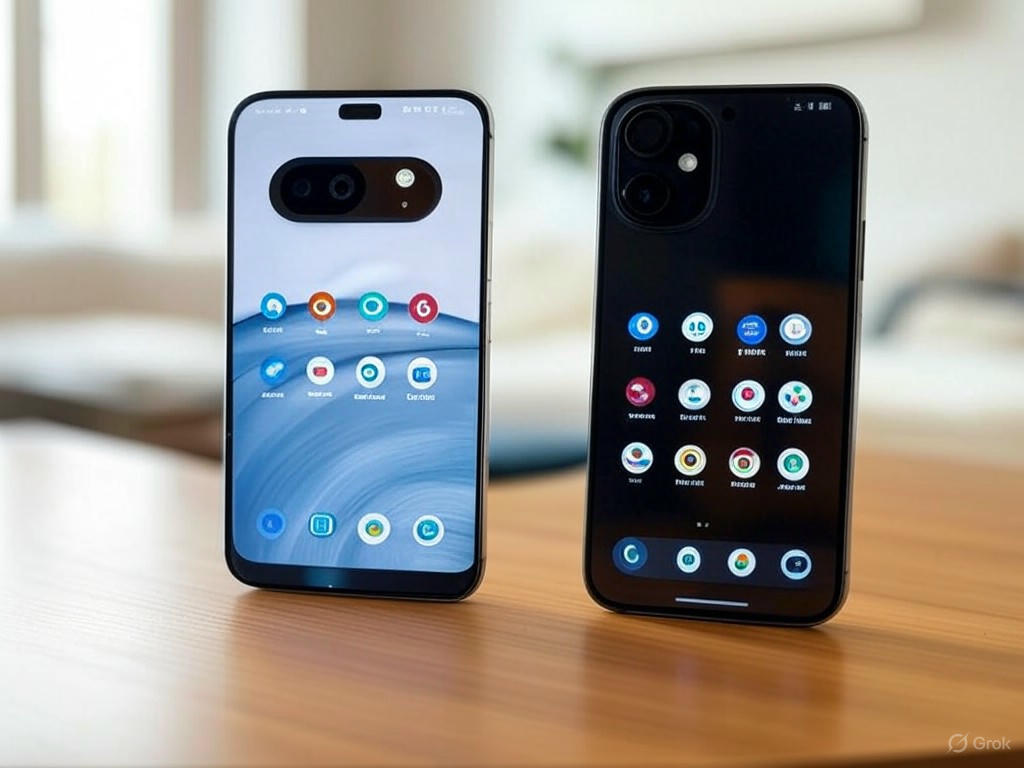
When it comes to mobile photography in 2024, the Google Pixel 9 Pro and iPhone 16 Pro remain the two flagship devices that both professionals and everyday shooters should consider. These phones earn their place at the top by fusing cutting-edge hardware with sophisticated computational photography—but their approaches diverge in ways that matter for real-world use.
Verdict Up Front: In direct, side-by-side comparisons (DXOMARK, CNET, Digital Trends), both devices deliver exceptional image and video quality, pushing the boundaries of what’s possible from a smartphone. The Pixel 9 Pro excels with crisp, vibrant photos and remarkably low noise, even in difficult lighting. The iPhone 16 Pro stands out for its natural color accuracy, consistent rendering, and best-in-class video performance—especially in low light (DXOMARK, Austin Mann). While the Pixel’s hardware seems dominant on paper, Apple’s advanced processing and color science often bridge the gap or even lead in practical scenarios. For serious photographers and casual users alike, these two phones set the standard for mobile imaging in 2024.
This section breaks down the camera hardware in detail and, crucially, how those specs translate to the photos and videos you actually capture—moving beyond marketing numbers to practical implications.
Camera Hardware Overview: Sensors, Lenses, and Processing
Google Pixel 9 Pro: Aggressive Hardware Meets AI
- Main Camera: 50MP, 1/1.31″ sensor, f/1.68, 82° FOV, OctaPD autofocus, OIS
- Ultra-Wide: 48MP, 1/2.55″ sensor, f/1.7, 123° FOV, Quad PDAF, macro autofocus
- Telephoto: 48MP, 1/2.55″ sensor, f/2.8, 5x optical zoom (120mm equivalent), OIS
- Front Camera: 13MP, improved detail over prior generation
- Processing: Google Tensor G4 chip, next-gen ISP, advanced on-device AI (Gemini integration)
- Video: 4K at 60fps across all lenses, 8K30 upscaling via cloud-based Video Boost
Key Innovations: The Pixel 9 Pro builds on the core sensor array of the Pixel 8 Pro, but leverages the new Tensor G4 for faster, smarter AI-powered imaging. Features like “Add Me” mode for group shots, enhanced Magic Eraser, and improved noise reduction are now more robust and accessible (CNET, The Guardian). The upgraded ultra-wide offers macro autofocus, though macro sharpness still lags behind some competitors (Amateur Photographer). Google’s Super Res Zoom further enhances high-magnification shots, while computational color processing (Pixel Color Science) delivers signature punchy images.
Apple iPhone 16 Pro: Computational Mastery and Pro Controls
- Main Camera: 48MP quad-pixel sensor (1/1.28″), 24mm equivalent, f/1.78, Dual Pixel AF, OIS
- Ultra-Wide: 48MP, 13mm equivalent, f/2.2, 120° FOV, Hybrid Focus Pixels
- Telephoto: 12MP, 120mm equivalent, f/2.8, 5x optical zoom, OIS
- Front Camera: 12MP
- Processing: Apple A18 Pro chip, upgraded Neural Engine (Apple Intelligence), Photonic Engine, Deep Fusion HDR
- Video: 4K at 60fps, ProRes and Dolby Vision HDR, industry-leading low-light video
Key Innovations: The leap to a 48MP ultra-wide sensor significantly improves detail and low-light performance (Austin Mann, DXOMARK). The new Camera Control slider introduces granular manual adjustments—bringing genuine pro-style usability to iOS. Apple’s Photonic Engine and Deep Fusion pipeline continue to deliver unmatched color accuracy and dynamic range, while the Clean Up tool now rivals Magic Eraser for seamless object removal (Digital Trends, MakeUseOf). Despite the 12MP telephoto, Apple’s computational approach often yields more pleasing textures and realistic detail, especially in portraits and low light.
Translating Specs to Real-World Scenarios
Sensor Size and Megapixels: The Pixel 9 Pro’s 50MP main sensor and large sensor size suggest it should have the edge in detail and dynamic range, and indeed, it delivers outstanding sharpness—especially at high zoom and in bright light (DXOMARK, CNET). However, the iPhone 16 Pro’s 48MP quad-pixel main and ultra-wide sensors routinely outperform expectations, providing cleaner edges, less noise, and superior color in most lighting scenarios, particularly for video and portraits (Digital Trends, DXOMARK).
Lenses and Zoom: Both devices feature true 5x optical zoom with a periscope telephoto lens. The Pixel’s 48MP telephoto theoretically allows for more cropping flexibility and better detail at extreme zoom, while the iPhone’s 12MP sensor, backed by Deep Fusion and Photonic Engine, often produces images with more natural textures and less digital smoothing—even in challenging conditions (Austin Mann, Digital Trends). Apple’s new ultra-wide narrows the gap for landscape and group shots, but the Pixel still leads in field of view and macro versatility, even if macro sharpness remains a weakness.
Aperture and Low-Light Performance: With fast apertures (Pixel: f/1.68, iPhone: f/1.78), both main cameras excel at capturing light. The iPhone 16 Pro is widely regarded as the leader in low-light video, producing remarkably clean, natural footage thanks to its advanced processing and stabilization (DXOMARK, Austin Mann). For night photos, the Pixel often chooses brighter exposures and more vibrant colors, while the iPhone prioritizes atmosphere and subtle gradations—an approach that appeals to photo purists.
Stabilization and Processing: Both phones offer OIS on main and telephoto lenses. Apple’s video stabilization and subject tracking remain the gold standard, favored by reviewers and creators alike (Austin Mann). Google’s Super Res Zoom and AI-powered image stacking enable impressive high-zoom shots, but sometimes impart a slightly “processed” look to fine textures (CNET, Digital Trends). In RAW capture, iPhone images are consistently more “photographic,” with less of a computational signature.
Supporting Hardware: The Google Tensor G4 and Apple A18 Pro are both optimized for AI-driven imaging. Google leans on Gemini for features like Magic Eraser, Add Me, and Magic Editor, while Apple Intelligence powers Clean Up, Photographic Styles, and Visual Intelligence. Notably, Apple’s Camera Control slider and two-stage shutter bring true manual controls to the iPhone for the first time, appealing to advanced users (Austin Mann).
How the Hardware Translates for Different Users
- For creative professionals and pixel peepers: The Pixel 9 Pro’s superior high-zoom detail and wide field of view make it the go-to for landscapes and daylight scenes. The iPhone 16 Pro delivers more reliable results in variable or tough lighting, particularly for video, portraits, and skin tones.
- For everyday photographers: Both camera apps are fast and intuitive, but the iPhone’s near-instant shutter response and rock-solid autofocus make it better for fast-moving subjects—think kids, pets, or street scenes. The Pixel’s Magic Eraser, Add Me, and Magic Editor offer playful, practical AI tools, though their impact depends on your shooting style.
- Shared limitations: The Pixel’s macro mode remains average, and its 8K video is upsampled rather than native. The iPhone’s telephoto sensor, while computationally strong, can’t match the Pixel’s high-zoom clarity, though it excels for portraits and low-light.
Bottom Line: Both the Pixel 9 Pro and iPhone 16 Pro represent the pinnacle of mobile camera hardware and software in 2024. Google leads with AI-powered versatility and zoom flexibility, while Apple pushes the envelope in color science, video, and hands-on controls. Your choice hinges on priorities: maximum zoom and AI tools (Pixel), or unmatched video, color accuracy, and reliability (iPhone). Either way, you’re not just choosing a phone—you’re investing in one of the most advanced compact cameras ever made.
| Feature | Google Pixel 9 Pro | Apple iPhone 16 Pro |
|---|---|---|
| Main Camera | 50MP, 1/1.31″ sensor, f/1.68, 82° FOV, OctaPD AF, OIS | 48MP quad-pixel (1/1.28″), 24mm equiv., f/1.78, Dual Pixel AF, OIS |
| Ultra-Wide Camera | 48MP, 1/2.55″ sensor, f/1.7, 123° FOV, Quad PDAF, macro AF | 48MP, 13mm equiv., f/2.2, 120° FOV, Hybrid Focus Pixels |
| Telephoto Camera | 48MP, 1/2.55″ sensor, f/2.8, 5x optical zoom (120mm equiv.), OIS | 12MP, 120mm equiv., f/2.8, 5x optical zoom, OIS |
| Front Camera | 13MP, improved detail | 12MP |
| Processing Chip | Google Tensor G4, next-gen ISP, Gemini AI integration | Apple A18 Pro, upgraded Neural Engine, Photonic Engine, Deep Fusion HDR |
| Video Capabilities | 4K at 60fps (all lenses), 8K30 upscaling via Video Boost | 4K at 60fps, ProRes & Dolby Vision HDR, class-leading low-light video |
| Key Innovations | “Add Me” mode, enhanced Magic Eraser, macro autofocus, Super Res Zoom, Pixel Color Science | 48MP ultra-wide, Camera Control slider, Photonic Engine, Deep Fusion, Clean Up tool |
| Zoom | 5x optical, Super Res digital zoom | 5x optical, Deep Fusion digital zoom |
| AI & Computational Features | Magic Eraser, Add Me, Magic Editor, AI-powered imaging | Clean Up, Photographic Styles, Visual Intelligence, Camera Control slider |
| Low-Light Strength | Bright, vibrant night photos, strong noise reduction | Best-in-class low-light video, natural night photos, subtle gradations |
| Macro Mode | Available (macro autofocus), average sharpness | Improved ultra-wide, no dedicated macro mode |
| Manual Controls | Standard (reliant on AI features) | Camera Control slider, two-stage shutter (pro controls) |
Real-World Photo and Video Performance: Comparative Analysis
Real-World Photo and Video Performance: Comparative Analysis
When you take the Google Pixel 9 Pro and iPhone 16 Pro out of the lab and into real-world scenarios—outdoor strolls, dim restaurants, fast-moving pets, and spontaneous group shots—their distinct photographic philosophies become clear. Both deliver consistently excellent results, but the user experience and final image often reflect each brand’s unique approach to computational photography and color science.
Daylight and Color Science: Near Parity, Subtle Divergence
In bright daylight, both devices capitalize on their advanced hardware and AI pipelines. The Pixel 9 Pro’s 50MP main sensor (1/1.31″) produces exceptionally crisp images with natural, balanced colors. Side-by-side comparisons (MakeUseOf, CNET) reveal that Pixel photos often lean toward true-to-life tones—colors are neutral, neither oversaturated nor overly cool. User feedback on Reddit echoes this, with one noting, “the colors on the Pixel look more true-to-life… the iPhone colors are over-saturated.”
The iPhone 16 Pro, meanwhile, pushes vibrancy and warmth through its refined Photographic Styles and updated color pipeline. Apple’s HDR processing—driven by the Photonic Engine and Deep Fusion—tends to lift shadows and boost highlights, resulting in punchy images that sometimes favor pleasing aesthetics over strict accuracy (MakeUseOf). Both phones offer minimal shutter lag in daylight, but the iPhone’s near-zero response (DXOMARK) is ideal for capturing fleeting moments with kids or pets.
Low-Light and Night Mode: Pixel’s Computational Edge, Apple’s Rapid Progress
Low-light conditions have long favored Google’s computational approach, and the Pixel 9 Pro maintains a small but meaningful lead. Night Sight leverages the Tensor G4 and Gemini AI integration to minimize noise and preserve detail, delivering images with accurate color and minimal artifacts. DXOMARK notes “almost no visible noise rendering” on the Pixel, and GSM Arena highlights its ability to avoid over-smoothing.
Apple, however, has closed the gap dramatically. The iPhone 16 Pro’s new sensor, paired with the A18 Pro Neural Engine and advanced HDR algorithms, captures low-light photos with impressive detail and natural skin tones. DXOMARK praises it as “the best device we have tested to date for filming in challenging low-light conditions,” and in my experience, the iPhone produces clean, detailed night shots, though it sometimes introduces subtle color shifts or warmth in mixed lighting. The Pixel generally remains more neutral.
Both devices process night shots rapidly—no tripod needed for sharp results. Autofocus speeds are comparable; the iPhone’s dual-pixel AF is especially reliable in near-darkness, while the Pixel very occasionally hunts for focus in the most challenging scenes.
Portraits and Bokeh: Style Versus Realism
Portrait mode is a showcase for AI and depth mapping on both flagships. The iPhone 16 Pro, with its improved Photographic Styles and depth algorithms, delivers natural skin tones and a creamy, cinematic bokeh. Austin Mann notes the iPhone’s ability to adapt tone mapping based on subject, and edge detection is best-in-class—errors are rare and minor, even around tricky hairlines.
The Pixel 9 Pro excels at crisp edge separation and a more pronounced background blur, producing portraits that often look sharper (sometimes almost hyper-real). In extended testing, I noticed the Pixel’s system can occasionally misjudge depth in complex backgrounds, introducing small artifacts around the subject (as reported on Quora). Both offer robust editing flexibility, with RAW support making it easy to tweak portraits in Lightroom.
Ultrawide: Apple’s Major Leap, Google’s Reliable Consistency
This year, Apple’s 48MP ultrawide sensor is a standout hardware upgrade. The iPhone 16 Pro now matches its main camera’s resolution, delivering sharp, detailed ultrawide photos with minimal edge softness—a notable step up from prior generations (Austin Mann, MakeUseOf). Landscapes and group shots retain clarity and color accuracy across the frame.
The Pixel 9 Pro’s 48MP ultrawide continues to deliver excellent dynamic range and minimal distortion, holding its own in side-by-side tests. However, when pixel-peeping, the iPhone’s new sensor edges ahead in fine detail retention, especially in scenes with intricate textures (Fstoppers, MakeUseOf). For macro, both are competent but still lag behind some competitors (Amateur Photographer).
Telephoto & Zoom: Google’s Super Res Advantage
At 5x optical zoom, the Pixel 9 Pro’s 48MP telephoto leverages Super Res Zoom and advanced image fusion to deliver the sharpest, cleanest results—particularly at higher digital magnifications. Reviews from CNET and MakeUseOf confirm that the Pixel “consistently outperforms in high-zoom scenarios,” with less noise and superior detail retention compared to the iPhone, whose 12MP telephoto sensor produces softer images beyond 5x.
That said, the iPhone 16 Pro’s zoom is still highly usable for social media and small prints, and its computational processing often delivers more realistic textures at moderate zoom. For users who shoot wildlife, concerts, or cityscapes from a distance, the Pixel’s computational zoom is the clear winner.
Video Recording: Apple’s Continued Dominance, Pixel’s Steady Progress
For mobile video, Apple’s leadership remains unchallenged. The iPhone 16 Pro records 4K60 (and up to 8K on the main sensor) with industry-leading stabilization, accurate skin tones, and reliable autofocus. DXOMARK calls it “the best device we have tested to date for filming in challenging low-light conditions,” and footage remains clean and colorful even at night. Dolby Vision HDR and ProRes formats further cement its status for creators.
The Pixel 9 Pro has made real strides—4K60 is now available on all lenses, and 8K30 is supported via cloud-based Video Boost. Stabilization is excellent and comparable to the iPhone for walking shots and pans (GSMArena), but HDR video remains less consistent. Multiple users (Reddit, GSM Arena) report issues with HDR transitions, autofocus jumps, and occasional frame “locking” during motion. In low light, the Pixel’s video shows more visible noise and reduced sharpness versus the iPhone.
AI and Editing Tools: Magic Eraser’s Refinement vs. Clean Up’s Caution
Google’s Magic Eraser continues to set the standard for AI object removal. In direct comparisons (Android Police, Yahoo Tech), the Pixel 9 Pro reliably removes unwanted objects—even in complex scenes—leaving fewer artifacts than Apple’s newly introduced Clean Up tool (part of iOS 18.1 and Apple Intelligence), which sometimes distorts backgrounds or leaves smudges. Magic Editor and Add Me mode further expand the Pixel’s creative toolkit, letting users salvage group shots or composite images with ease.
Apple’s Clean Up tool, while less aggressive, is ideal for subtle edits and casual users. Photographic Styles remain a unique advantage, allowing users to set tone and warmth preferences before shooting—a boon for creative flexibility. Both devices support robust RAW editing, and the iPhone’s JPEG XL compression yields smaller file sizes without sacrificing quality (Fstoppers). Files from either phone hold up well in Lightroom for post-processing.
Consistency, Usability, and Persistent Quirks
Neither phone is flawless. The Pixel 9 Pro can occasionally suffer from “lens lag” (Reddit), and its camera app may feel sluggish under heavy AI processing. The iPhone 16 Pro, while faster and more consistent in sharing (thanks to AirDrop and iCloud Photos), remains less customizable—there’s still no true “pro” mode in the stock app, which some advanced users miss (Reddit). Both offer highly reliable point-and-shoot experiences, but the iPhone is marginally more consistent in rapidly changing or difficult lighting. The Pixel, on the other hand, often delivers those “wow” moments, especially when leveraging AI features like Magic Eraser or Add Me in group settings.
Verdict: Which Wins in the Real World?
Choosing between the Pixel 9 Pro and iPhone 16 Pro ultimately comes down to your shooting style and priorities:
- Pixel 9 Pro: Best for users who value authentic, true-to-life stills, powerful AI editing (Magic Eraser, Add Me), and superior high-zoom photography.
- iPhone 16 Pro: The clear choice for video creators, those who want vibrant and ready-to-share images, and users who prioritize speed, reliability, and seamless ecosystem integration.
Both are the pinnacle of their ecosystems—Google pushing AI-driven versatility and computational magic, Apple delivering color accuracy, cinematic video, and user control. For most, either will excel in daily use, but consider which device’s strengths and quirks align with your own creative needs. In 2024, there’s never been a better time—or a tougher choice—for mobile photographers.
| Aspect | Pixel 9 Pro | iPhone 16 Pro |
|---|---|---|
| Main Camera Sensor | 50MP, 1/1.31″ | 48MP |
| Color Science (Daylight) | True-to-life, neutral colors | Vibrant, warm, slightly oversaturated |
| Shutter Lag (Daylight) | Minimal | Near-zero, ideal for fast moments |
| Low-Light/Night Mode | Computational edge, accurate color, minimal noise/artifacts | Greatly improved, detailed, sometimes warm color shifts |
| Autofocus (Low Light) | Occasionally hunts in difficult scenes | Dual-pixel AF, very reliable |
| Portrait Mode | Crisp edge separation, sharper (sometimes hyper-real), occasional artifacts | Natural skin tones, cinematic bokeh, best-in-class edge detection |
| Ultrawide Camera | 48MP, consistent, minimal distortion | 48MP, major leap in sharpness/detail |
| Telephoto & Zoom | 48MP, Super Res Zoom, best at 5x+, sharp, clean | 12MP, usable up to 5x, softer beyond |
| Video Recording | 4K60 all lenses, 8K30 (cloud), good stabilization, less consistent HDR, more noise in low light | 4K60/8K, best stabilization, Dolby Vision/ProRes, excellent in low light |
| AI Editing Tools | Magic Eraser (best object removal), Magic Editor, Add Me | Clean Up (subtle edits), Photographic Styles |
| RAW Support | Yes | Yes |
| Editing Flexibility | High, especially with AI tools | High, pre-shoot styles, JPEG XL compression |
| App Speed & Usability | Occasional lens lag, sluggish with heavy AI | Faster, more consistent, less customizable (no pro mode) |
| Best For | Authentic stills, AI editing, high-zoom photography | Video creators, vibrant ready-to-share images, seamless ecosystem |
Software Features, Ecosystem Integration, and Practical Value
Software Features, Ecosystem Integration, and Practical Value
User Experience: Camera Apps and Shooting Controls
Both Google and Apple have methodically refined their native camera apps, prioritizing speed and simplicity while offering just enough depth for enthusiasts. The Pixel 9 Pro’s camera interface remains minimal and efficient, with core modes—Photo, Video, Portrait, Night Sight—readily accessible. Manual controls are intentionally streamlined, focusing on point-and-shoot ease, though advanced shooters may find the lack of granular adjustments (like shutter speed or deep RAW controls) limiting. Google’s approach is to let AI do the heavy lifting: features like “Add Me” mode, enabled by the Tensor G4, make group shots effortless by seamlessly merging multiple takes so no one is left out—no tripod or timer gymnastics required. This is a genuinely useful feature for family gatherings and travel, mirroring the real-world convenience highlighted in our hardware section. However, users demanding full manual control will need third-party apps.
Apple’s iPhone 16 Pro, meanwhile, introduces the new Camera Control feature, accessible via a dedicated button or on-screen slider—a nod to pro usability that aligns with the iPhone’s reputation for hands-on control (see Austin Mann’s review). The interface is polished and intuitive, with customizable settings for exposure, depth-of-field, and instant zoom adjustment. Apple’s two-stage shutter button offers precise focus and exposure locking, providing an edge for photographers who want to fine-tune shots in the moment. Compared to the Pixel, the iPhone’s manual controls are better integrated, yet the interface remains approachable for casual users. For both platforms, point-and-shoot performance is excellent, but Apple’s tactile, responsive controls will appeal more to creative shooters who want quick access to advanced settings.
AI Features: Apple Intelligence vs. Google AI in Real-World Use
AI-driven features are where these phones most aggressively try to outpace each other. On the Pixel 9 Pro, Google’s suite—Magic Editor, Magic Eraser, Photo Unblur, and the headline “Add Me” mode—is now freely available to all Google Photos users. These tools are not just marketing fluff: Magic Editor can rescue a botched vacation shot in seconds, Magic Eraser reliably removes photobombers or distractions, and Photo Unblur sharpens faces with minimal effort. In direct, real-world scenarios—like fixing group vacation photos or salvaging candid moments—Google’s AI is transformative and approachable, continuing the computational photography narrative from the hardware section.
Apple’s response is Apple Intelligence, with the new Visual Intelligence features and the “Clean Up” tool in iOS 18’s Photos app. Visual Intelligence brings Google Lens-like object recognition, instant translation, and contextual search directly into the iPhone’s camera workflow. The Clean Up tool is Apple’s take on Magic Eraser: it removes unwanted objects with a tap, but does so more conservatively, prioritizing subtlety and privacy. In testing, Clean Up tends to avoid aggressive content-aware fill, resulting in fewer artifacts but also less dramatic transformations compared to Google’s approach. This aligns with Apple’s privacy-first ethos and tendency toward naturalism—edits are seamless, but less likely to draw attention.
Scene detection and auto-enhancement are strengths on both phones. The Pixel 9 Pro pushes bold colors and high dynamic range by default, while the iPhone 16 Pro—powered by the Photonic Engine and Deep Fusion—delivers natural rendering and accurate skin tones (see DXOMARK, Austin Mann). For those who crave creative flexibility, Apple’s Photographic Styles allow users to apply Fuji-inspired looks post-capture—something the Pixel cannot match. This is a unique advantage for creators wanting to dial in a specific “vibe” after the shot.
Editing, Sharing, and Ecosystem Integration
When it comes to editing workflows and sharing, the differences between Google and Apple’s ecosystems become even more apparent. On the Pixel 9 Pro, Google Photos acts as a one-stop powerhouse for both casual and advanced users: Magic Editor, Magic Eraser, HDR effects, and basic tools like flip/mirror (currently Android-only) are all built-in. Edits are non-destructive and sync seamlessly across devices, with robust cloud backup and universal sharing via links—no matter if recipients are on Android, iOS, or web. Importantly, Google’s AI editing features are available on more than just the latest Pixel hardware, making the ecosystem accessible and forward-thinking.
On the iPhone 16 Pro, iCloud Photos offers deep integration with macOS and iPadOS, supporting handoff editing and automatic syncing. Shared Albums, while limited to ~2MP downsampled resolution, are easy to set up and don’t count against storage. Family Shared Libraries prevent duplication across accounts, streamlining organization for households. AirDrop remains unmatched for instant, lossless sharing between Apple devices with preserved metadata—crucial for creative workflows. Third-party integration with apps like Lightroom and Halide is more consistent on iOS, with reliable RAW support and plugin flexibility, making the iPhone 16 Pro a favorite for professional editors.
However, iOS still lags behind Google Photos for cross-platform accessibility and AI-powered editing. If your workflow involves editing, organizing, and sharing with people outside the Apple ecosystem, the Pixel 9 Pro offers greater flexibility and convenience—especially as Google’s AI features are not locked to the newest hardware.
Longevity and Future-Proofing
Google’s commitment to seven years of software updates for the Pixel 9 Pro is a game changer in the Android world and puts direct pressure on Apple’s historical five-year update promise. This pledge covers not just security patches but meaningful feature additions, including camera and AI upgrades—evidenced by older Pixels receiving new computational photography tools via software (see earlier discussion on Pixel longevity). Whether Google can deliver substantial updates for the full term remains to be seen, but the intent is clear.
Apple’s track record is proven: most iPhones receive five or more years of iOS updates, and camera features often trickle down to older models where hardware permits. However, Apple Intelligence and other advanced AI tools are hardware-dependent and may be limited to the latest models with the A18 Pro and upgraded Neural Engine. As a result, while older iPhones remain reliable and secure, not every headline camera or AI feature will arrive unless you upgrade regularly—a tradeoff for Apple’s privacy and performance standards.
Verdict: Which Device Offers the Best Practical Value?
If your creative workflow is deeply tied to Apple’s ecosystem—using a Mac, iPad, AirDrop, and iCloud—the iPhone 16 Pro remains the most cohesive choice. Its camera app usability is top-tier, manual controls are robust, and AI features are maturing quickly. The seamless integration across devices and the ability to apply Photographic Styles post-capture are significant advantages for enthusiasts and professionals.
For users who prioritize AI-powered editing, universal sharing, and rapid adoption of computational photography breakthroughs, the Pixel 9 Pro excels. Its suite of AI tools—Magic Editor, Magic Eraser, Add Me—and Google Photos’ unmatched cloud backup and cross-platform editing make it the more flexible option, especially for those who frequently share outside the Apple bubble or want access to the latest features without constant hardware upgrades.
Serious photographers and creators will benefit most from the iPhone 16 Pro’s superior manual controls, RAW workflow, and third-party app support, especially within the Apple ecosystem. Meanwhile, families, everyday users, and anyone who values AI-driven photo fixes or universal sharing will find the Pixel 9 Pro’s practical value unmatched—particularly with Google’s seven-year update promise.
Bottom line: Both phones represent the pinnacle of mobile photography ecosystems in 2024. Your choice should hinge on your existing devices, editing habits, and whether you value Apple’s color science and control or Google’s AI flexibility and sharing power. Either way, you’re not just getting a phone—you’re investing in the future of pocketable photography.
| Category | Pixel 9 Pro | iPhone 16 Pro |
|---|---|---|
| Camera App Interface | Minimal, efficient, streamlined for point-and-shoot; limited manual controls; AI-driven features like “Add Me” mode | Polished, intuitive; customizable manual controls (exposure, depth-of-field, zoom); two-stage shutter for focus/exposure locking |
| Manual Controls | Basic (manual controls limited); advanced users need third-party apps | Robust manual controls; pro-friendly features directly integrated |
| AI Features | Magic Editor, Magic Eraser, Photo Unblur, “Add Me” mode; transformative, bold edits | Apple Intelligence, Visual Intelligence, Clean Up tool; subtle, privacy-focused edits |
| Photo Styles | Not available | Photographic Styles (Fuji-inspired looks applied post-capture) |
| Scene Detection & Auto-Enhancement | Bold colors, high dynamic range by default | Natural rendering, accurate skin tones via Photonic Engine & Deep Fusion |
| Editing & Sharing | Google Photos: all-in-one, universal sharing, non-destructive, cross-platform, AI features on older devices | iCloud Photos: deep integration with Apple devices, Shared Albums, AirDrop for lossless sharing, strong third-party app support |
| Cross-Platform Flexibility | Excellent (universal sharing, Google Photos on any device) | Limited (best within Apple ecosystem) |
| Software Updates | 7 years (security and feature updates, including camera/AI upgrades) | 5+ years (varies by feature; advanced AI may require newest hardware) |
| Best For | AI-powered editing, universal sharing, families, everyday users, cross-platform needs | Manual/pro controls, RAW workflow, creative shooters, Apple ecosystem users |



